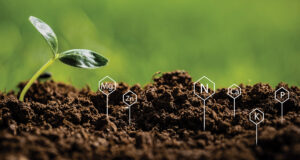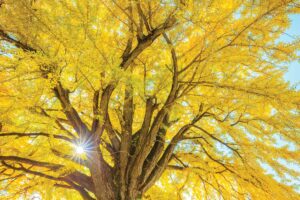It’s a new year and many are reflecting on their 2019 gardening season and making resolutions for 2020. If you are like me, you started missing gardening in early November, can’t wait for temperatures to rise and strive for all those grand resolutions. When I can’t garden, I read trend reports from the Horticulture Industry.
A trend that will continue into 2020 is the houseplant craze. It is fueled by either the barrage of beautiful pictures on Instagram, the actual health benefits of them or both. My Instagram feed has been inundated with images of the trendy Chinese Money Plant, Black Raven ZZ plant, variegated monsteras, string of hearts, rubber trees in every size and color—so many succulent varieties they almost didn’t look like real plants—and my personal favorite, jungle cacti.
My own Instagram, UofIHortNerd, highlighted my night-blooming cereus cactus that bloomed for only three nights this summer (at 4 a.m. I might add) with the most exquisite and delicate downward-facing blossoms that filled the night air with fragrance. Although my post received a humble 11 likes, some houseplant Instagram accounts that I follow receive thousands for a well-posed houseplant, and I want every one of them—their plants, that is!
For many, just being in a room with a beautiful plant uplifts their spirits and well-being, but can they also improve the air we breathe. A study at the University of Georgia found that tropical houseplants purple waffle plant, ivy, wax plant, and asparagus fern rated the highest in removing toxins from the air. A win-win for beauty and health.
“Reduce, reuse, recycle” was introduced to us in the 70s to remind us about being environmentally conscience in our daily lives. Creative repurposing for the garden is a trend on Pinterest. Although this has been trending for many years, it is here to stay.
There are classics like making a miniature greenhouse out of plastic bottles, cold frames out of old windows, seed trays out of egg cartons, or utilizing toilet paper rolls and newspapers. Gardeners now repurpose sturdier, less biodegradable items like milk jugs, antique furniture, tires and bird baths that are otherwise destined for the trash. This concept supports a gardening trend I love – wabi-sabi.
Wabi-sabi is a Japanese appreciation of the imperfect, and finding beauty in the simple, rustic, natural world, best explained by an example. You are walking in your neighborhood and see a rusty fence with clematis growing on it, the spent blooms have fallen in the moss growing under the grand oak tree and it is beautiful. Do you replace the fence, clean up the clematis blossoms or try to grow grass instead of moss? Not if you adopt the concept of wabi-sabi.
Gardeners are thinking about their soil. From composting to growing cover crops, gardeners are no longer under the misconception adding a little lime and tilling each year is the way to truly manage the health of the soil. A larger concept of managing soil organisms like bacteria, fungi and invertebrates are taking a bigger role in the minds of gardeners.
The organisms living in the soil play a momentous role in maintaining a healthy soil system and productive plants. Microorganisms digest organic matter like leaves and dead root systems creating nutrients that are available to plants. A gardener’s role is to feed these organisms, so plants grow better and the structure of soil is improved. Limiting tillage, reducing compaction, growing a diversity of plants, using mulch, cease using pesticides, and allowing decomposition of organic matter can conserve and promote these microorganisms.
Cover crops add organic matter, reduce soil erosion, suppress weeds, improve water quality and provide places for nesting birds. University of Illinois suggests selecting cover crops based on needs in your garden. For example, a legume cover crop such as Austrian peas or hairy vetch can fix nitrogen deficiencies, or plant grass cover crops such as winter wheat, grain rye or oats to scavenge leftover nutrients from the vegetable garden.










